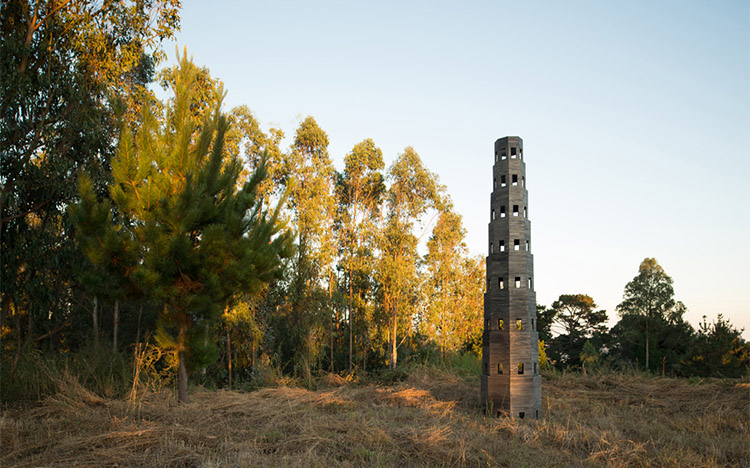A day of architecture, art and design with… Solo Gallery
Solo Houses architectural project hosts Summer Group Show
The Solo Houses architectural project is hosting the Summer Group Show, the first edition of a unique annual exhibition initiated by its promoters, the gallery owners Eva Albarrán and Christian Bourdais, founders of the Solo Gallery and creators of the Solo Houses project. Located in the natural environment of Matarraña (Bajo Aragón), it features national and international artists presenting projects that challenge the perception of space in dialogue with nature and the environment.
This first show, which opened on 24 May and will continue for six months, brings together a total of nine projects by artists with whom Solo gallery works, together with others proposed by the gallerists Juana de Aizpuru and Emilio Álvarez, director of Àngels Barcelona.
Ugo Rondinone, Iván Argote, Barozzi Veiga, Christian Boltanski, Peter Bownsbrough, Olivier Mosset, Fernando Sánchez Castillo, Pezo Von Ellrichshausen and Héctor Zamora are the artists participating in this edition.
The works on display are temporary installations, some of them previously existing and others created for the occasion, which are presented scattered around the Solo Houses site: in the open air and in the middle of nature. This project undoubtedly proposes a notion of the art gallery as a space for meeting and experimentation, beyond its conception as a closed exhibition space. In a sort of reinvention of the Land of the Tender, during this journey the stops along the route are marked by the nine works of art that make up the exhibition, two of which have been created specifically for this occasion and others have been reconstructed for the Matarraña environment.
An attractive cultural attraction that will make it even more special to spend a few days of holidays in Solo Houses this summer.
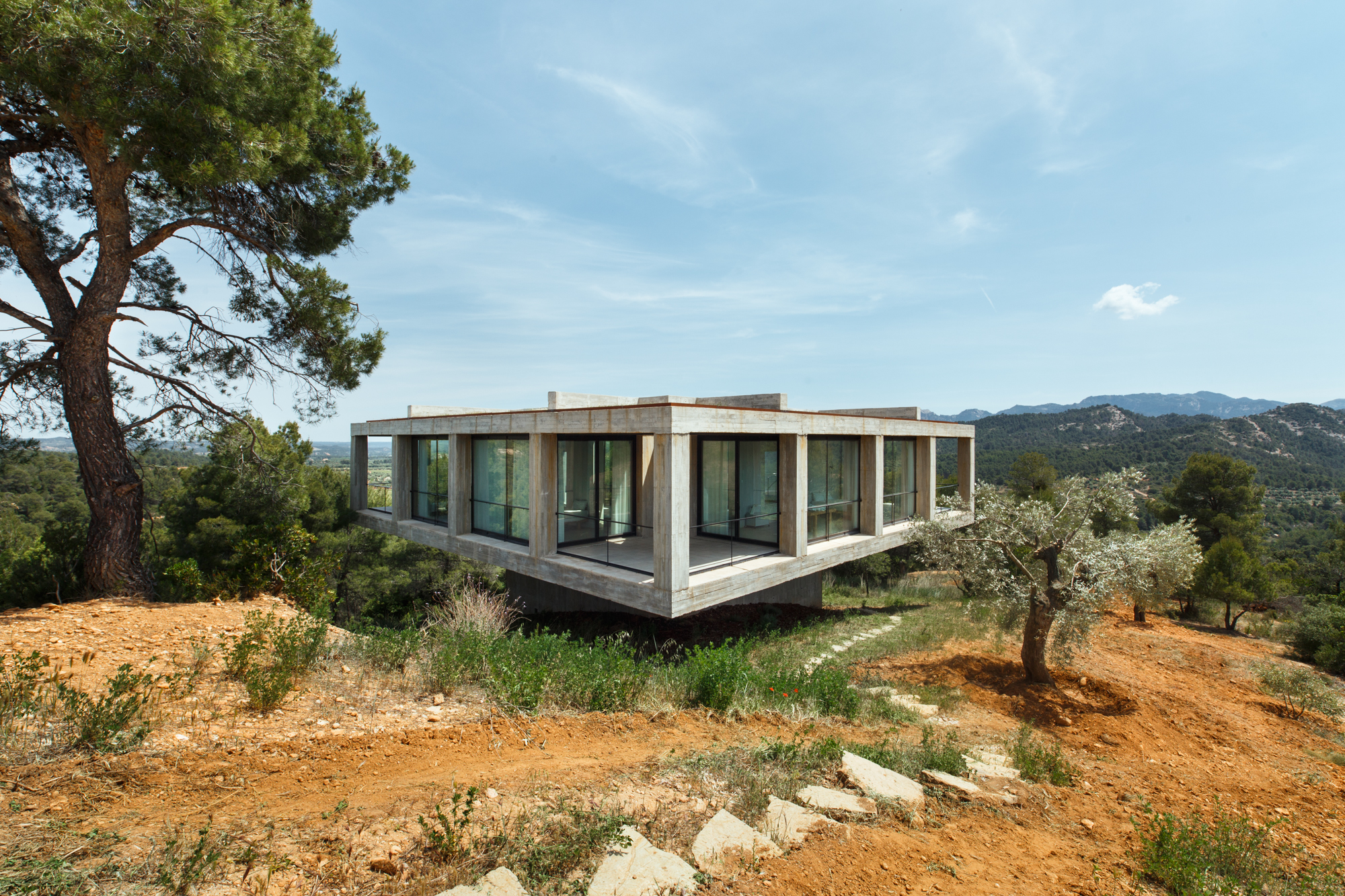
SOLO HOUSES
With the aim of confronting art with architecture and landscape, and facilitating new experiences and formats for architects in synergy with the natural environment, Bourdais and Albarrán launched Solo Houses, the first collection of architecture in Europe.
Located on the edge of the Ports Natural Park, it is made up of fifteen houses (two built and thirteen planned), immersed in the heart of nature, surrounded only by themselves. The unique design of each house is the result of the gallerists’ invitation to twelve of the world’s most innovative architecture studios, who were given carte blanche to conceive them. The open field between these houses now becomes an exhibition space that brings art, architecture and the surrounding nature into conversation.
With this in mind, Albarrán and Bourdais’ first Summer Group Show promotes the integration of the architectural and artistic experience, completing the unique cycle of Solo Houses: architecture, nature and art.
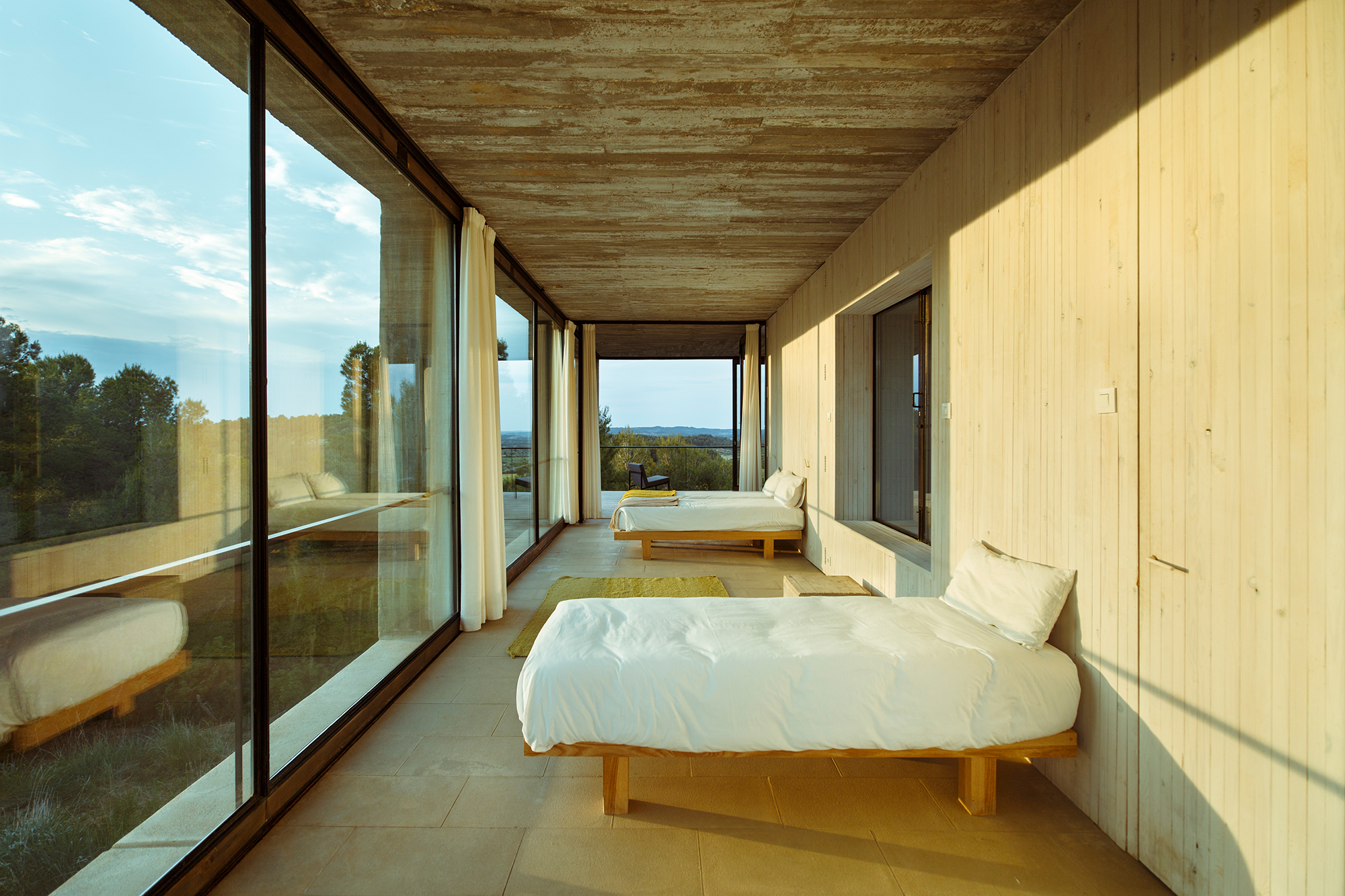
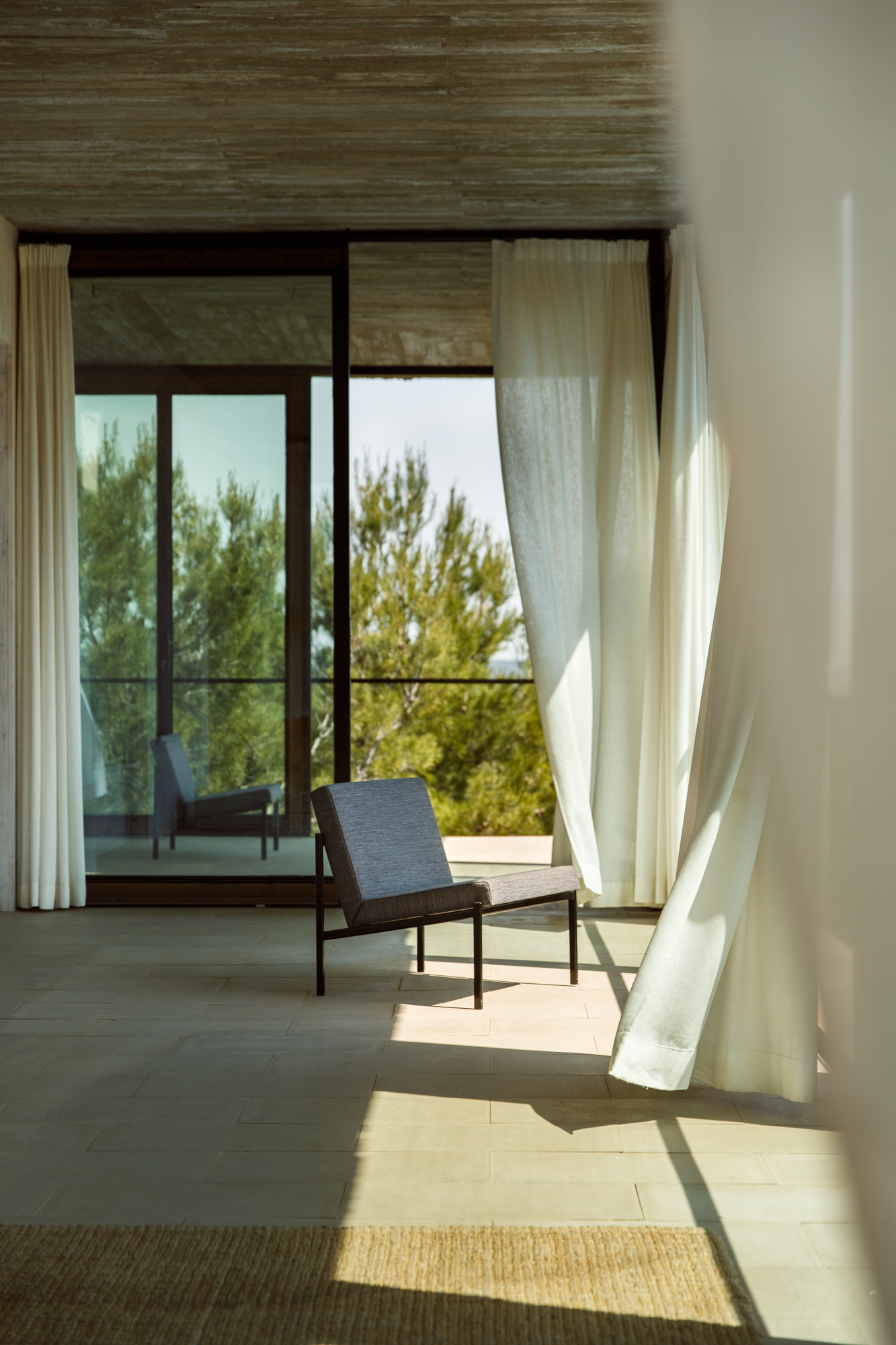
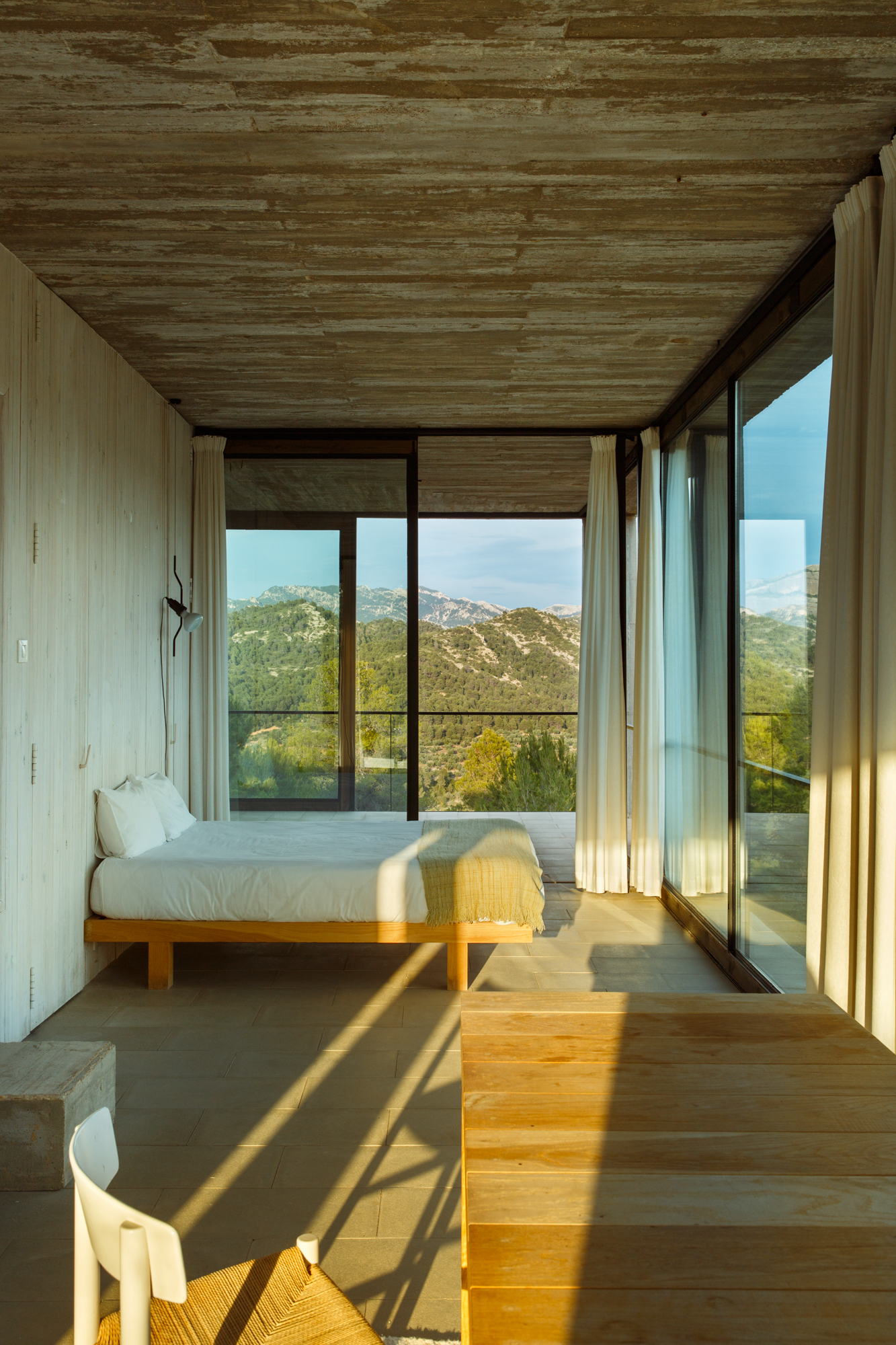
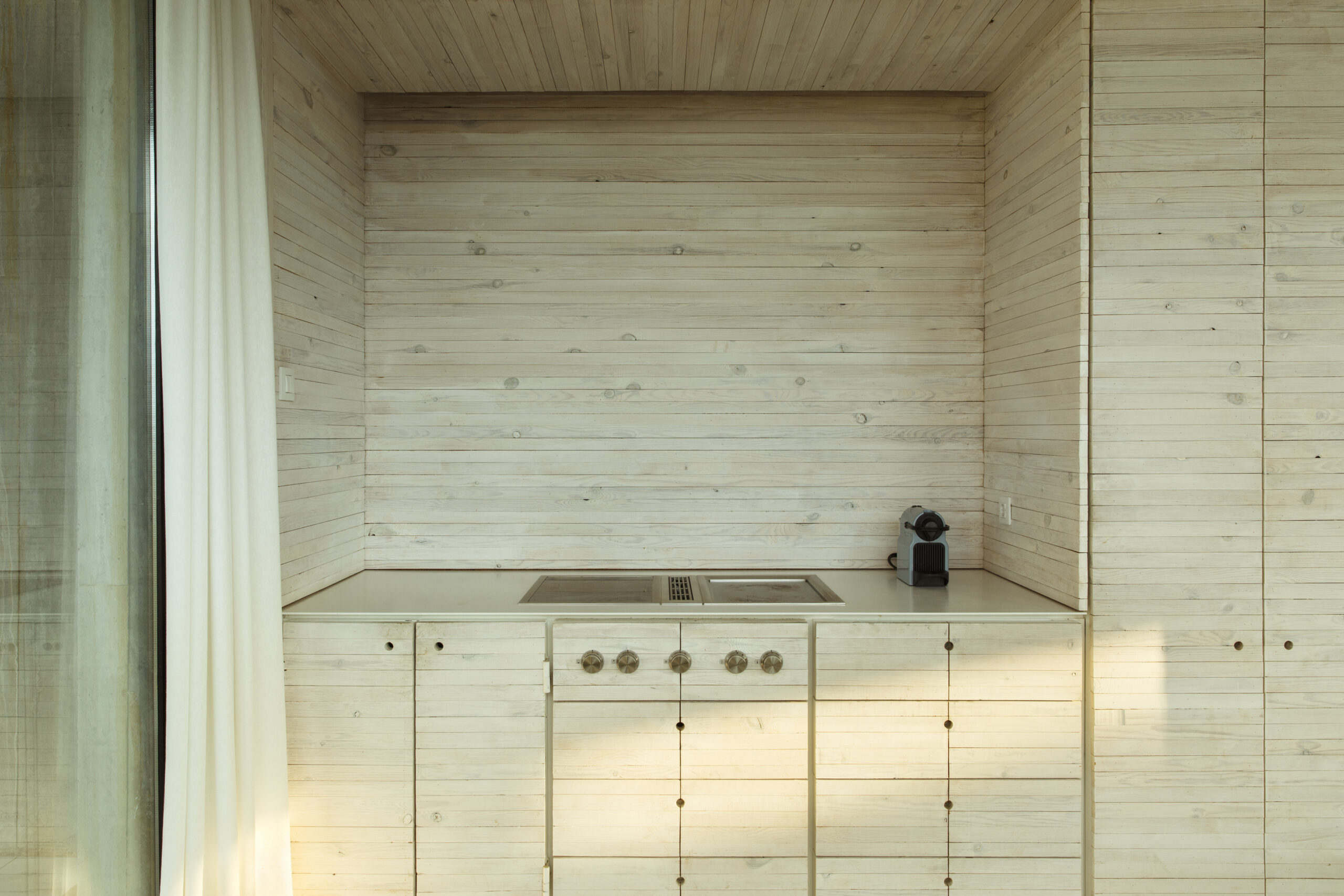
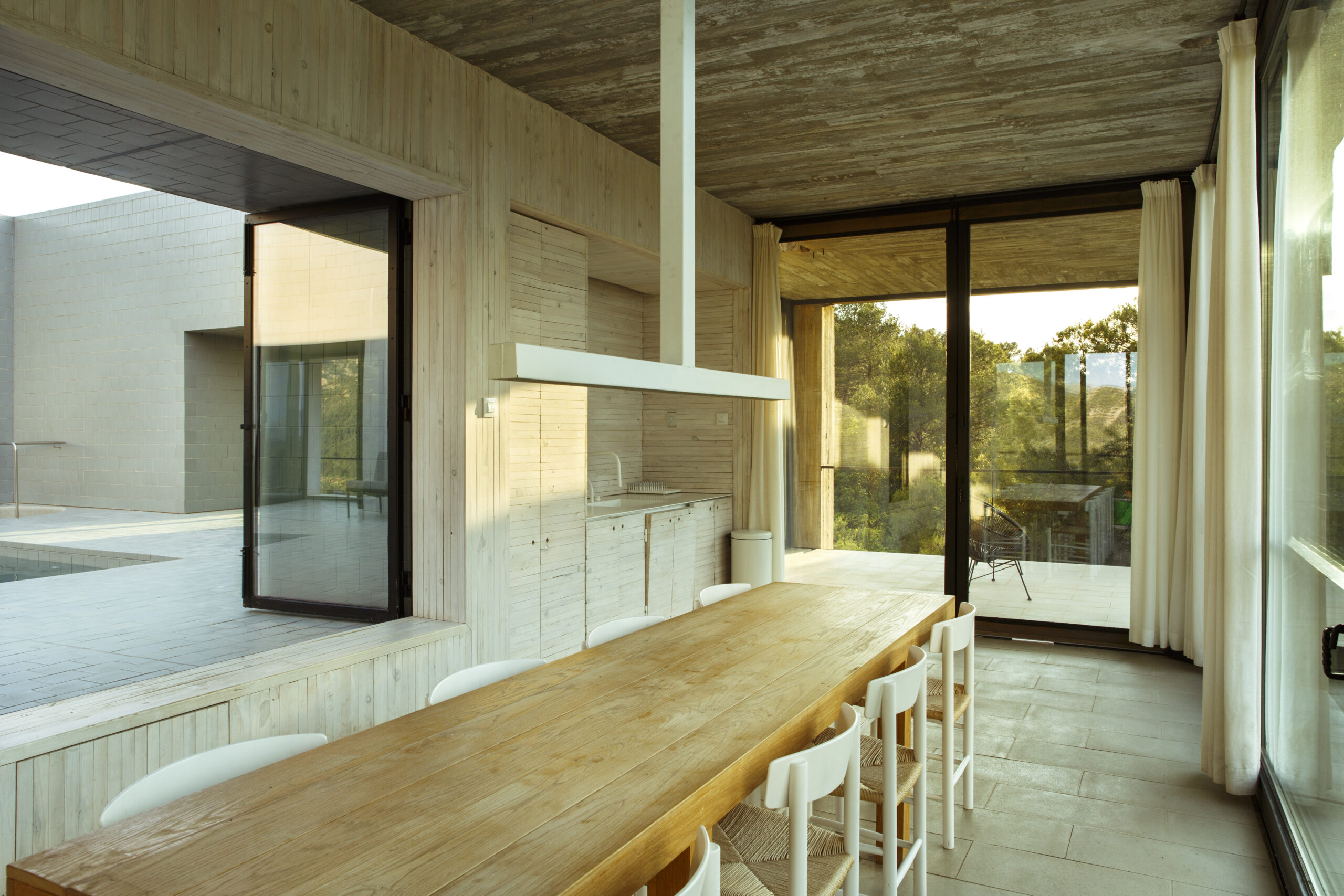
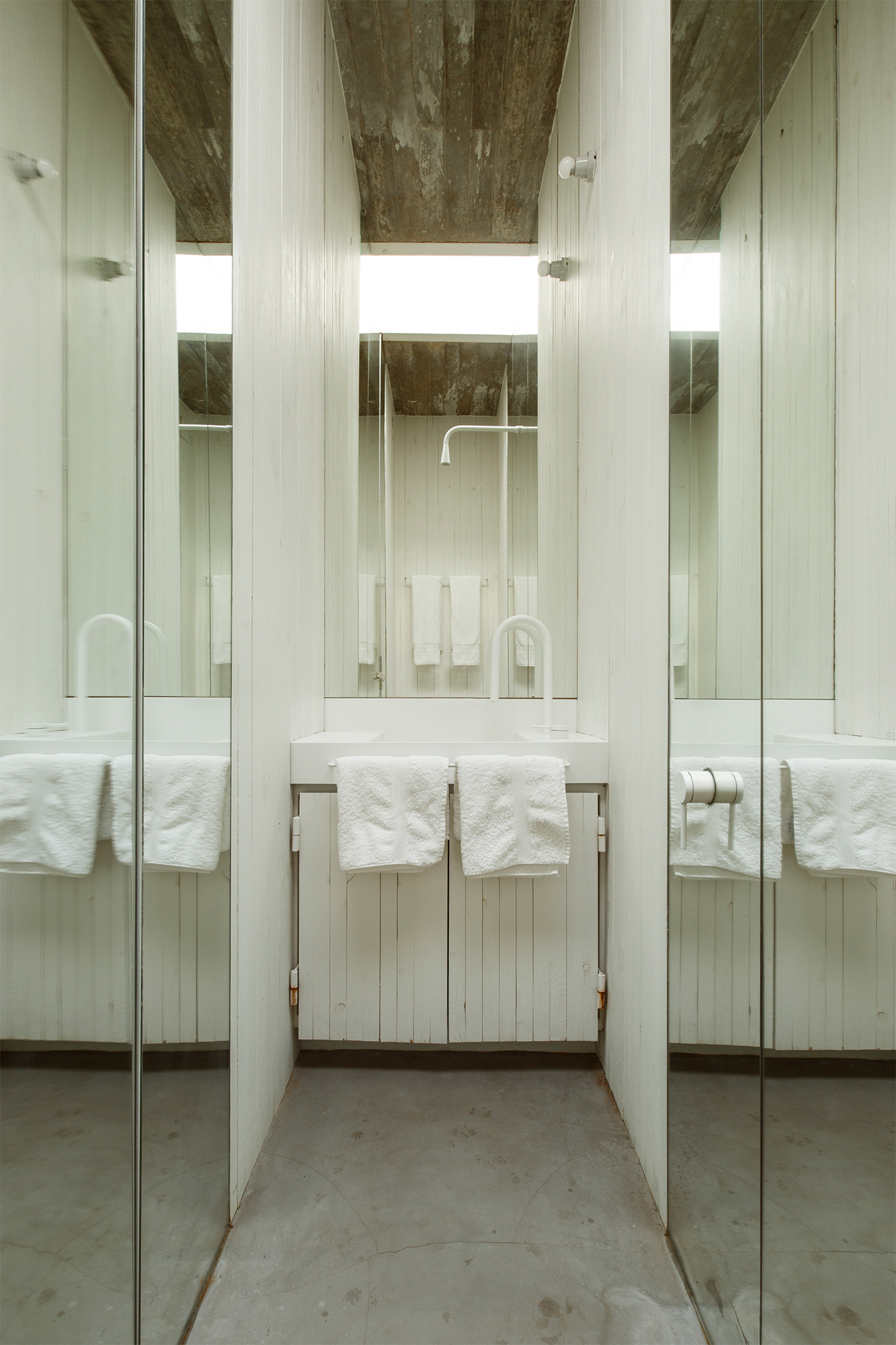
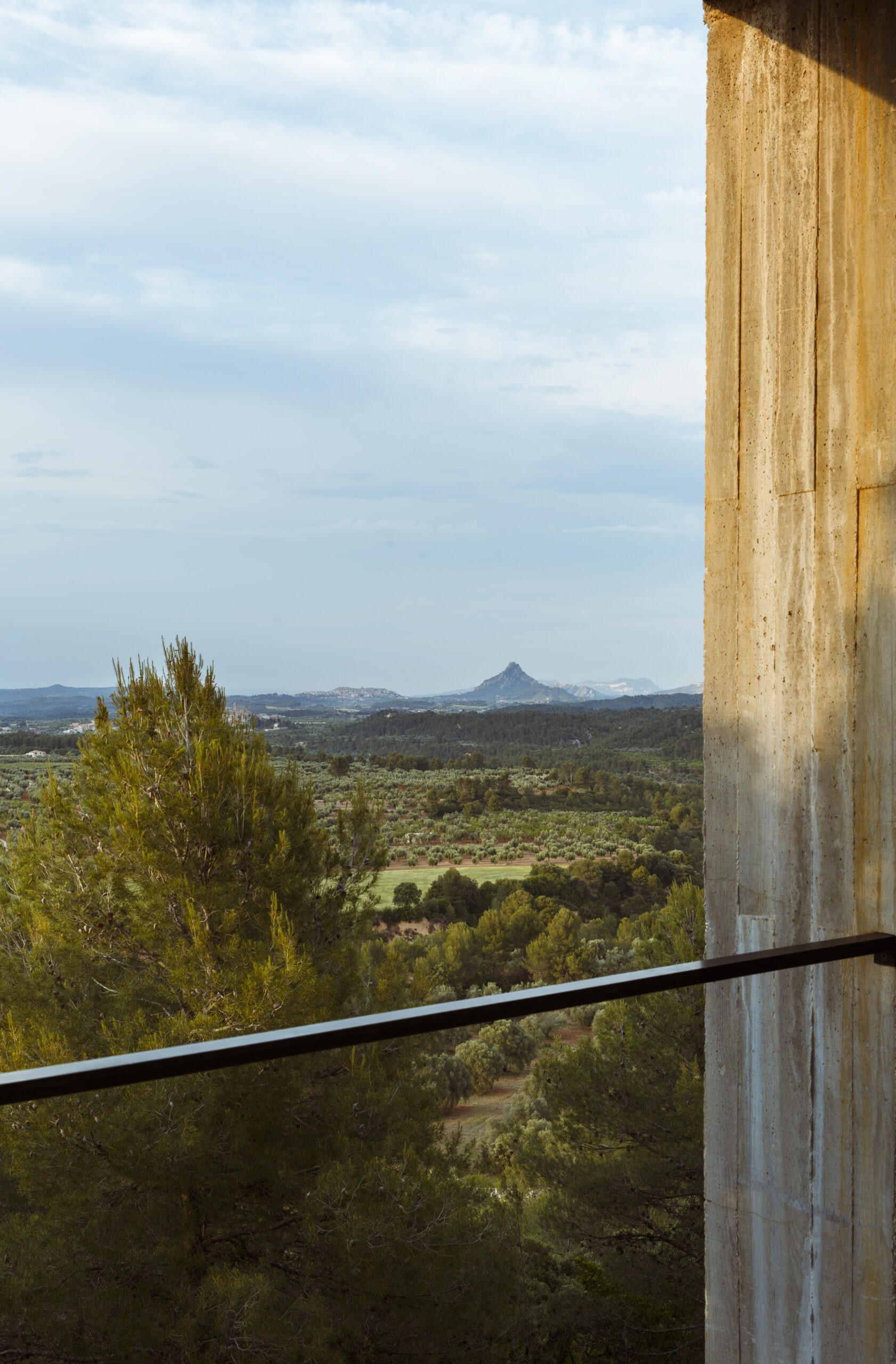
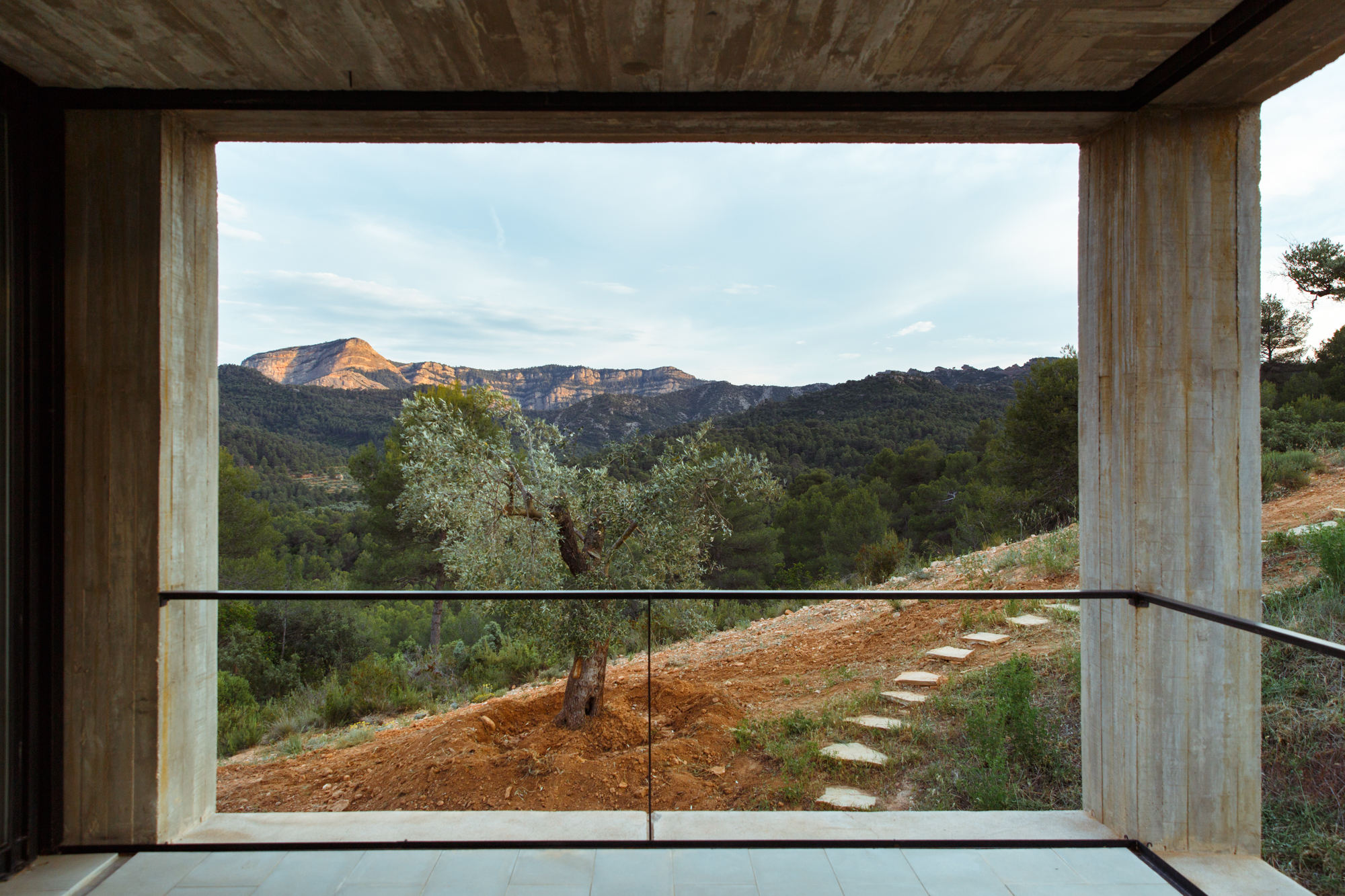
Photographs and information: Solo Gallery
Ugo Rondinone – Kissing the void, 2012
The work consists of a field of small stones, painted in a single fluorescent colour. They establish a flat geometric form surrounded by a rusted steel frame. Rondinone draws on the principles of land art – in which the work was aesthetically linked to the surrounding landscape and nature – and thus uses natural materials that he renders artificial through the brutal contrast introduced by the colour in this work.
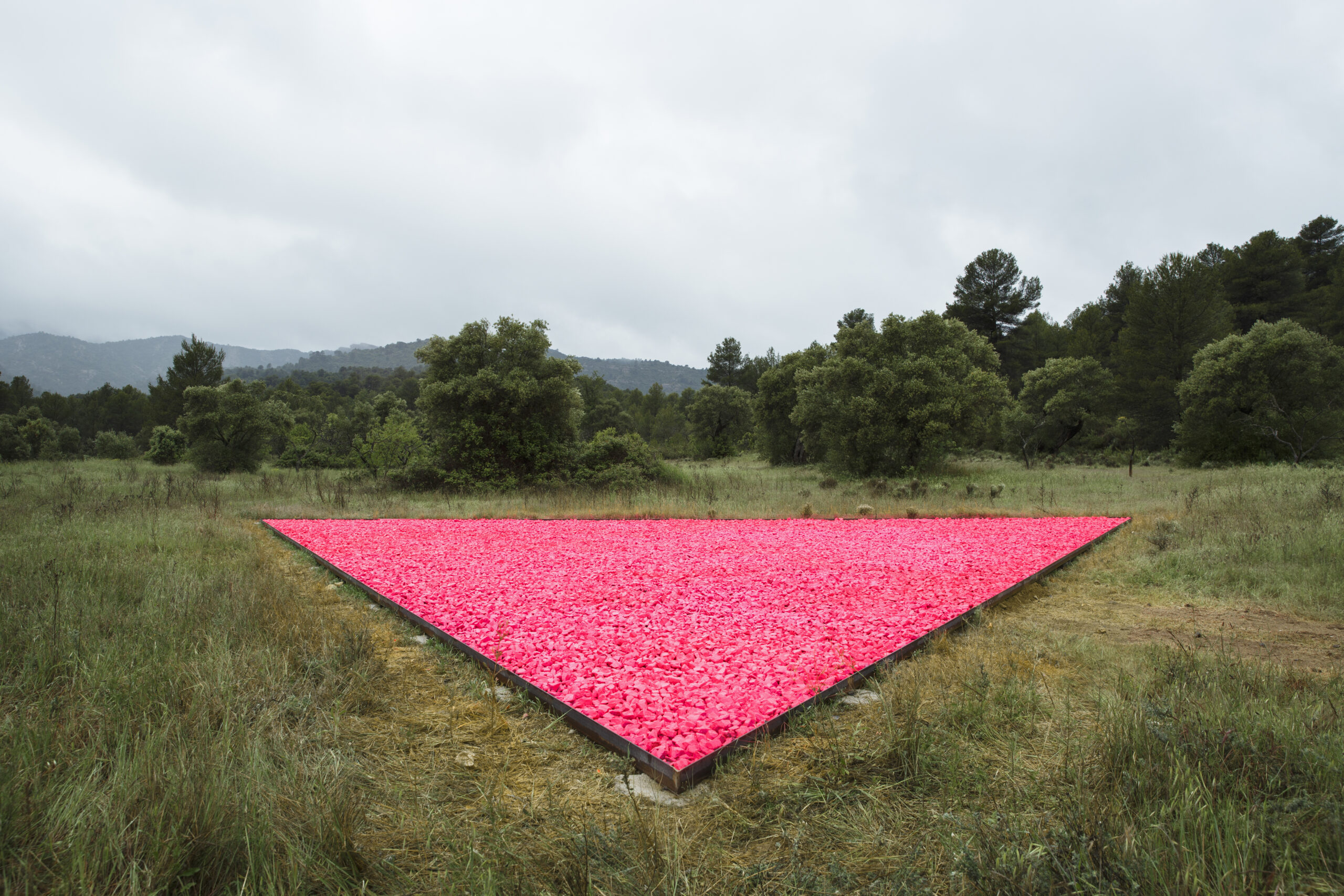
Olivier Mosset – Cimaise, 2012
For Mosset, a great work is one in which the viewer sees “nothing beyond what is there”. The artist presents it in five different ways in which the five concrete blocks vary their position: in a circle, in a row, in parallel, in the shape of a panopticon, in the shape of a pentagon and superimposed. Each of these presentations is the same work, giving prominence to the material and the shape of each of the blocks, which are one after the other manipulated to the point of neutrality and transformed into monumental sculptures that seem to be waiting for the absent painting.
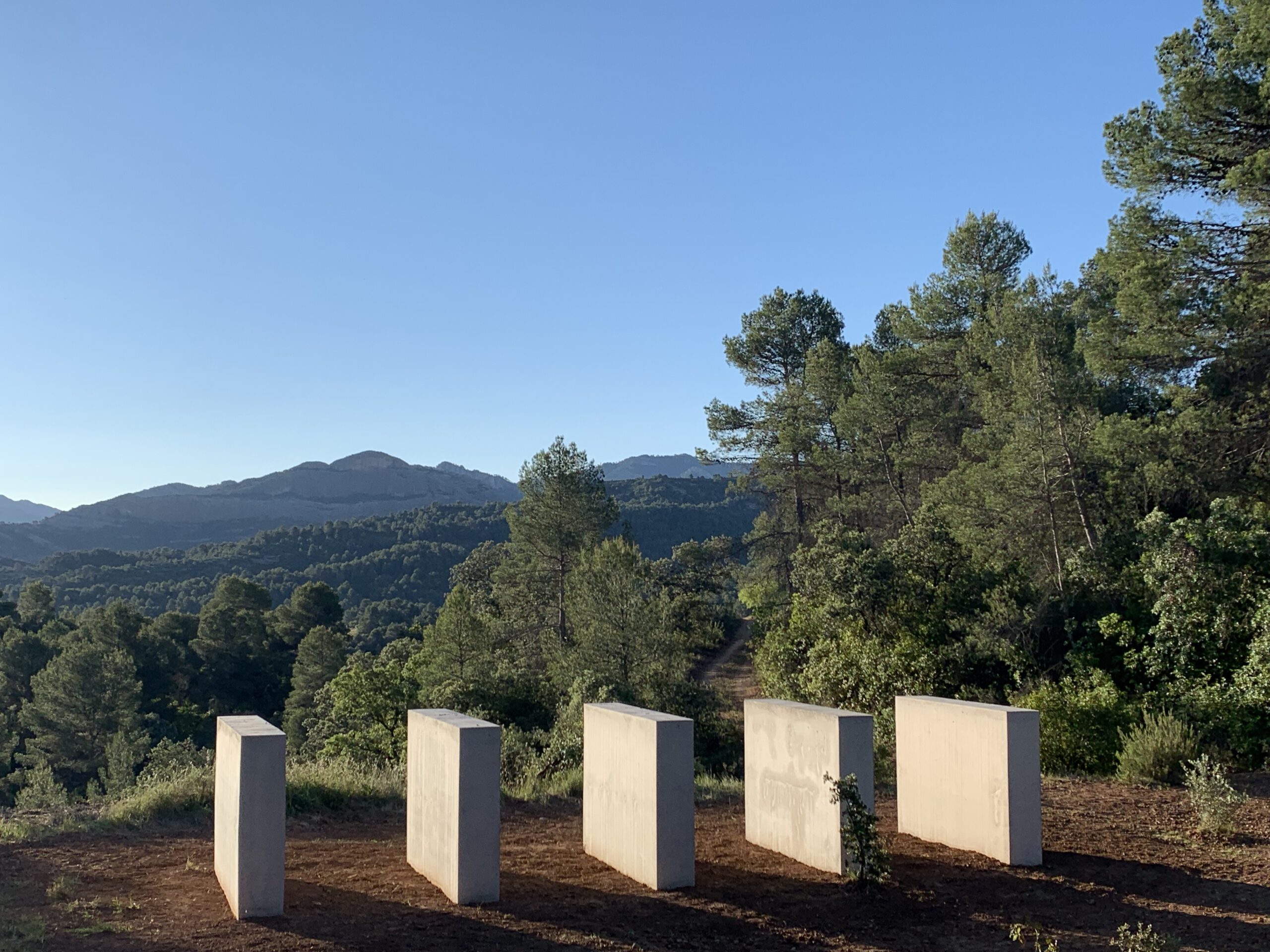
Christian Boltanski – Animitas, 2014
Five hundred Japanese bells were placed according to the configuration of the stars on the night Boltanski was born. When the wind blows, the bells tinkle suspended from thin metal reeds producing a delicate chime, while the plates attached to each one reflect the light. Animitas was established in 2014 in the Atacama Desert (Chile) and has since been repeated in other contexts, including a snowy landscape in Canada, a forest in Japan or the Dead Sea in Israel.
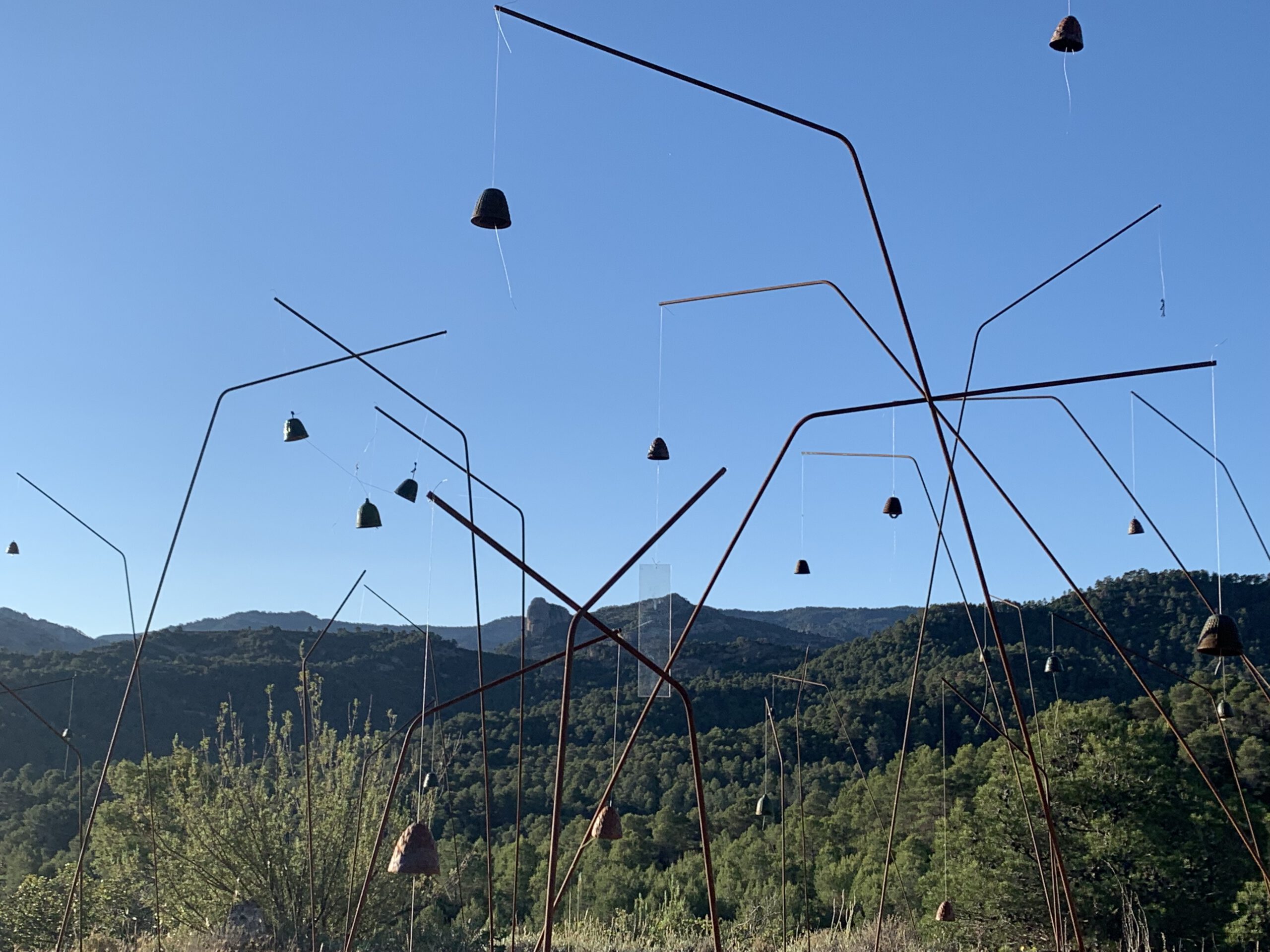
Peter Downsbrough – All, 2017
TODOS offers a reflection on the importance of the position adopted: that of the sculpture within its context, that of the viewer in front of the work, that of the artist within the world around him. Within these complex structures, the position of each element plays a decisive role, both in language and in architecture. The lines and words used to underline the architecture offer a passage of openness towards the environment, towards interpretation, inviting us to shift our gaze to read the place, the context and the work with a different role; the spectator thus becomes a participant.
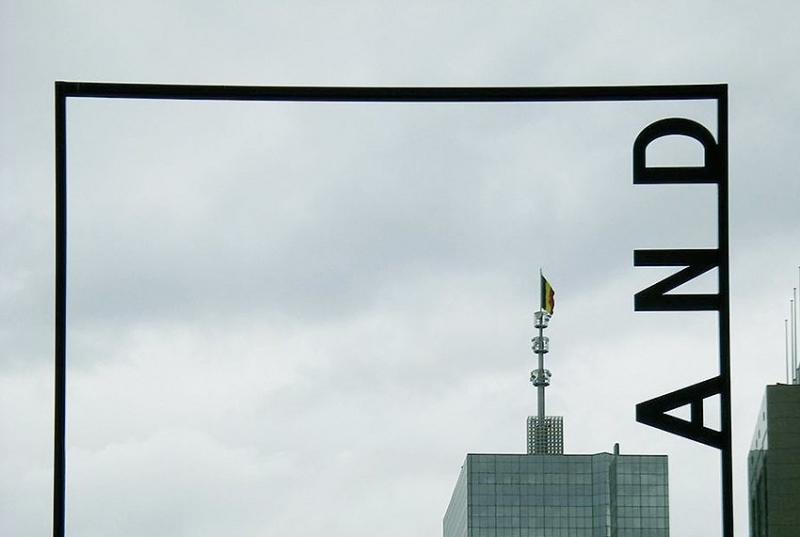
Iván Argote – Melting Bodies, 2017
“We are tender” is the phrase that can be read on the billboard that makes up the work. Unlike conventional billboards, the text is perforated on the metal that supports the billboard and gives a glimpse of the surrounding landscape. The work reflects the possibility of combining commitment and sensitivity in the same structure, giving a message in which the support complements the meaning.
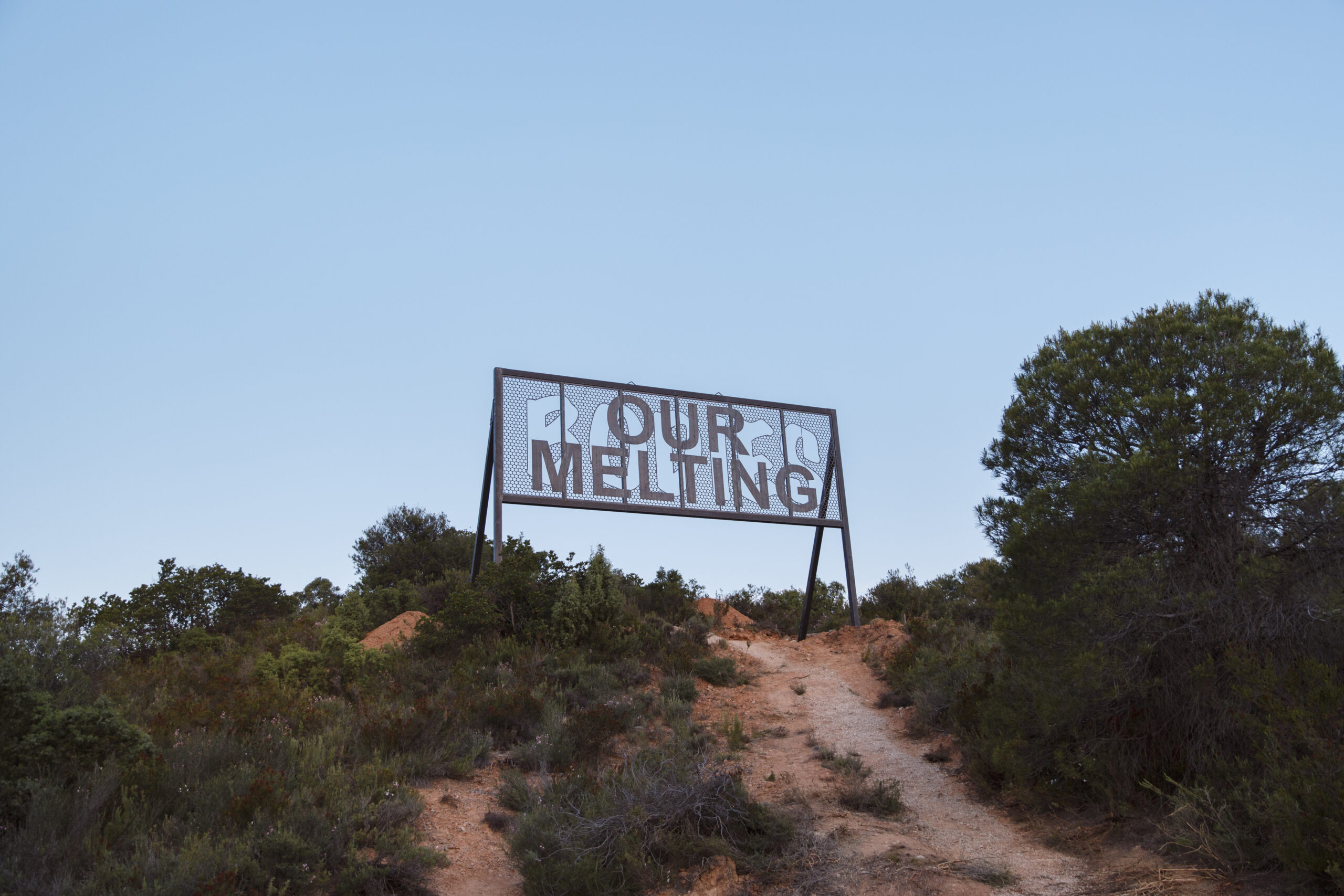
Fernando Sánchez Castillo – Event, 2010
The artist has created a monument to the barricades erected in Spanish cities during the recent demonstrations with the most valuable of sculptural materials, bronze, which has always been used for the construction of commemorative monuments. His Barricada Collage. La naturaleza de lo social (2014) consists of “natural” vacuum prints of everyday objects reconverted for the “street fight”, elevating the ensemble of branches, tyres and bottles to a monument of resistance. Often it is precisely the historical monuments in the public space that seem so obvious to us, as Robert Musil wrote: “The most striking thing about monuments is precisely that one does not notice them”.
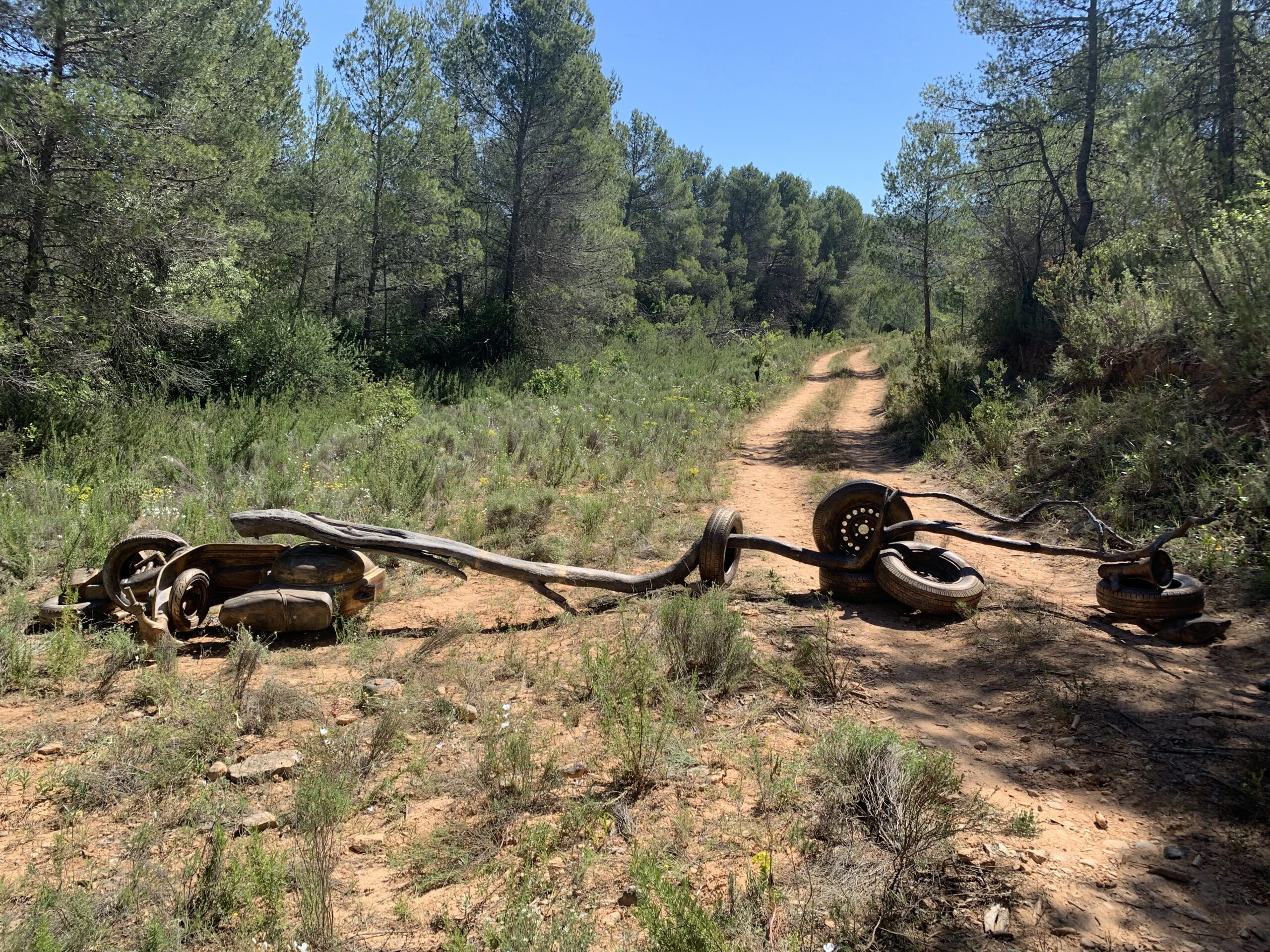
Barozzi Veiga – A Sentimental Monumentality, 2015
The work of architects Fabrizio Barozzi and Alberto Veiga in recent years has revolved around the attempt to dignify the public as a space for the collective, defining a specific architecture for its surroundings. By giving importance to the sentimental link established between architecture and its surroundings, they seek to identify an architecture that aspires to give dignity, identity and a sense of belonging to the places of civil life. For them, this type of work is an example of architecture that is both specific and autonomous, capable of preserving the richness and uniqueness of each place while at the same time revealing the unexpected landscapes it conceals.
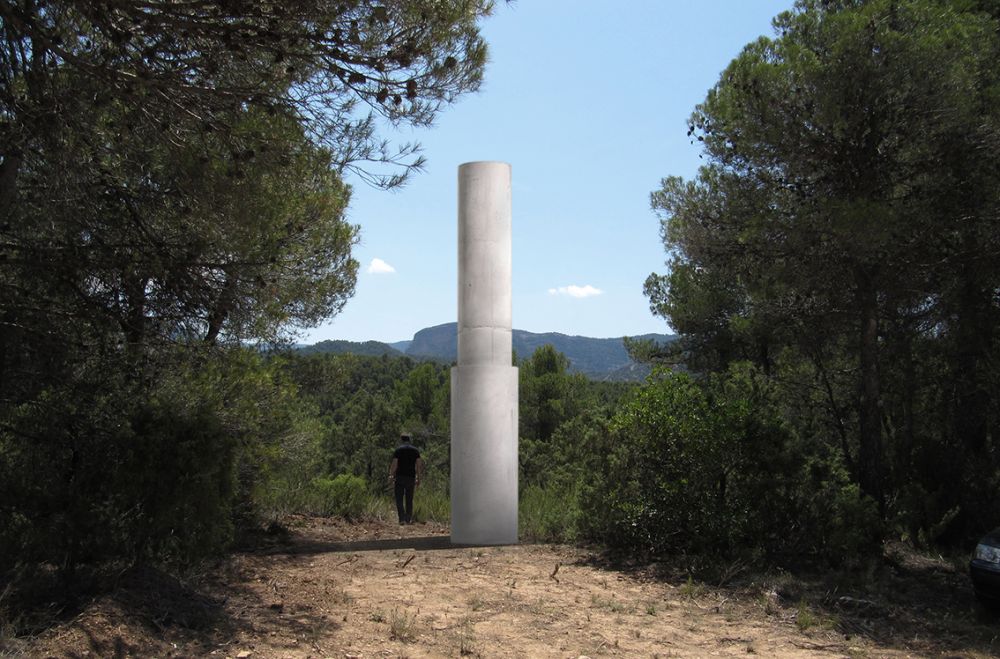
Héctor Zamora – Truth Always Appears as Something Veiled, 2017
In reference to the drawing of a labyrinth discovered on a stone found in Cnido (Turkey), Héctor Zamora will create a labyrinthine structure. This type of labyrinth provides a circular route that leads to the centre and back without presenting alternative options or shortcuts; they are labyrinths that oppose the Western ones that create a network of options for the walker. The perforated brick walls partially obstruct the view, offering “a new perception between the hidden and the open”. This visual permeability aims to recover the semi-translucent and semi-open walls of the labyrinth, and establishes a contrast with the classical concept of “labyrinth”, in which the wall makes it impossible to see and forces one to walk through it in search of its centre.
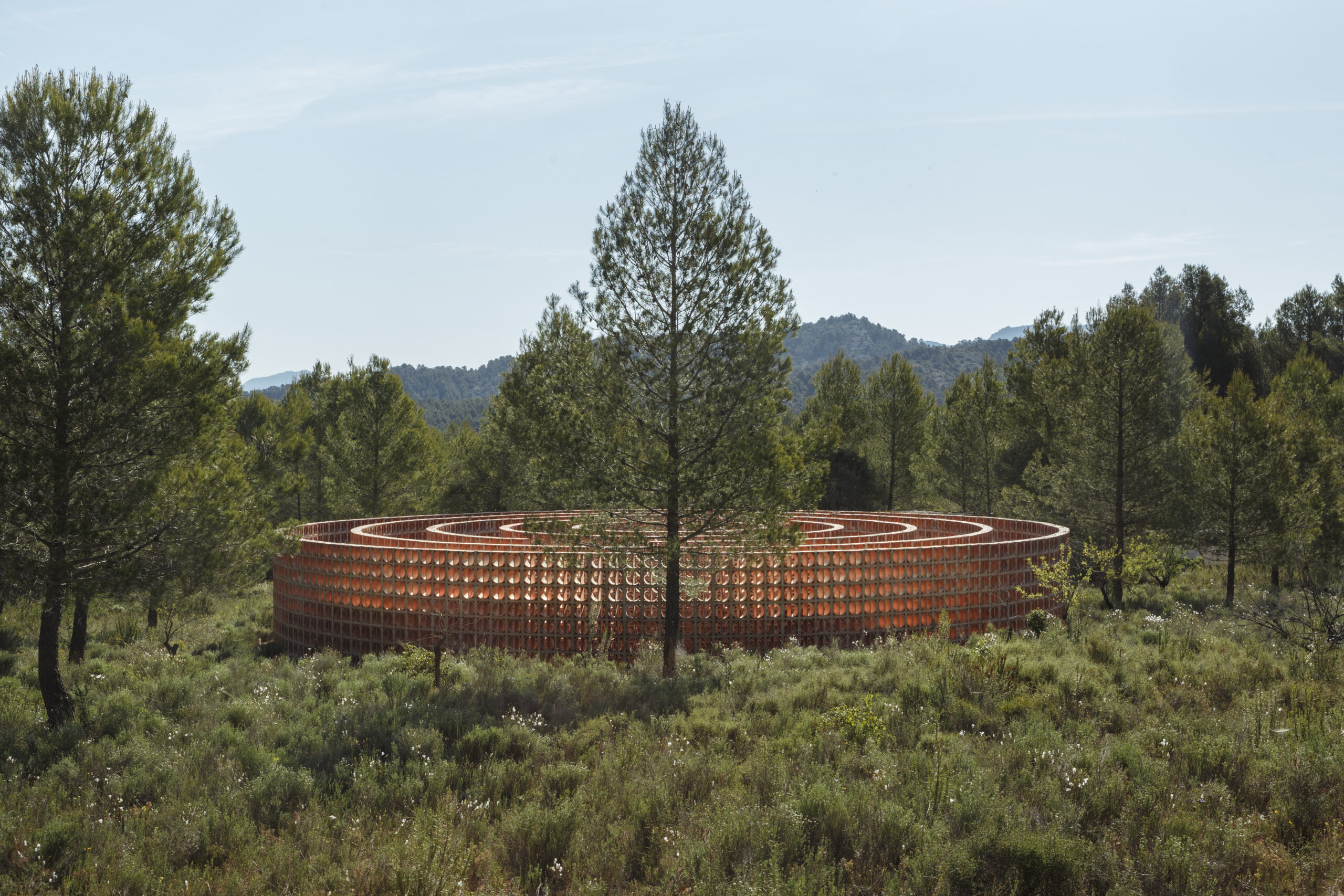
Pezo von Ellrichshausen – Deci, 2016
“We once imagined a room with no walls and no ceiling, barely confined by three slender columns. The room would be generous to the point of losing two of the columns against the horizon. We soon corrected our modesty; the room would have to retreat against the only known corner of its triangular plan (…). Ten years later (…) we redrew what we remembered of this naïve idea. Naturally, time knocked down two of the columns. Now the third column (…) would conceal the entire enclosure and its surroundings. This vague and solitary column, with something of a penitentiary fort and something of a decorative obelisk, would not only serve to enclose every landscape that touched it but also to cancel any remote possibility of leaving it”.
